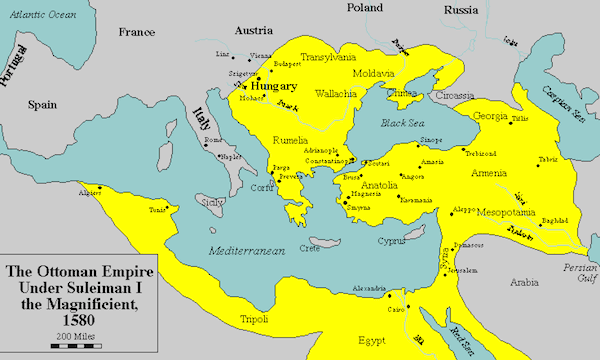One of my favorites on Twitter is @archpics which tweets out photos of interesting architecture from around the world, mixed between traditional and modern, but with more of the former.
A recent item was eye-catching, and had the brief caption, “Fortified church of Prejmer (1250). Part of the villages with fortified churches in Transylvania.”
Fortified, indeed.

The location was a big hint, and Wikipedia affirmed my suspicion: the cause of fortifications was the Ottoman Empire, which was an expression of Islamic aggression against the West for centuries.

Prejmer Fortified Church, Wikipedia
The Prejmer fortified church (Romanian: Biserica fortificată din Prejmer; German: Kirchenburg von Tartlau) is a Lutheran fortified church in Prejmer (Tartlau), Brașov County, in the Transylvania region of Romania and the ethnographic area of the Burzenland. The church was founded by the Germanic Teutonic Knights, and then was eventually taken over by the Transylvanian Saxon community. Initially Roman Catholic, it became Lutheran following the Reformation. Together with the surrounding village, the church forms part of the villages with fortified churches in Transylvania UNESCO World Heritage Site.
[. . .]
Fortifications and recognition
When Ottoman forces or other invaders would break through the Buzău Pass, Prejmer was the first place they encountered; the village was destroyed over 50 times between the 13th and 17th centuries, while the church was only rarely captured. Due to this strategic position, the church was strongly fortified in the 15th-16th centuries. After Sigismund of Luxemburg ordered defensive systems to be built in the Burzenland, high, strong walls were built and surrounded with a water-filled moat. It seems that a subterranean tunnel linked the church to the exterior. The circular walls are up to 5 m thick and reach nearly 12 m in height. The circular walls surround the church, while a second and smaller wall sits atop the arched passage at the entrance gate. Other defensive features include five towers and a battlement. On the interior side of the wall, there are four levels containing rooms and storage space and backed by the battlement. The over 270 rooms could offer shelter to some 1600 villagers in case of attack. Entry into the complex is made through a 30 m long tunnel protected by a portcullis with wooden grilles strengthened by iron and powerful oak doors. To the right of the entrance stands a large barbican.
(Continues)
Islam is an implacable enemy of western culture and freedoms, which in this case was recognized by the extreme defensive architecture in the church as a reaction.
It’s a big mistake to continue allowing muslims to immigrate. Not all are jihadists, but a major theme of their religion is to conquer infidels: as a result, aggression can show up in the second generation as young people try to establish their identity as immigrants and residents of a western nation. History has not been erased just because we live in a modern society where technology figures strongly.


